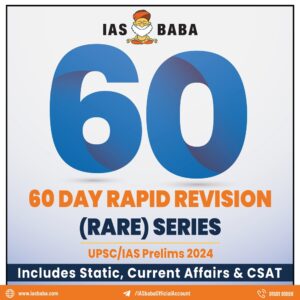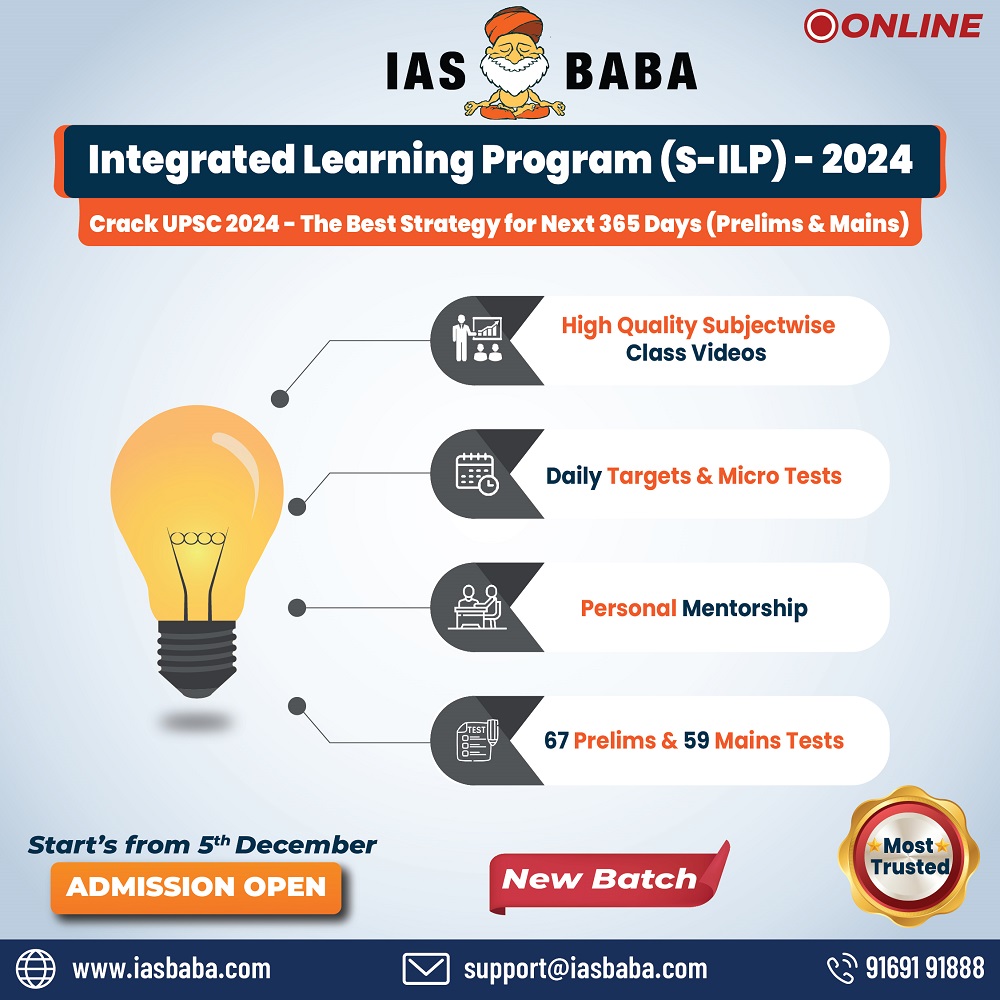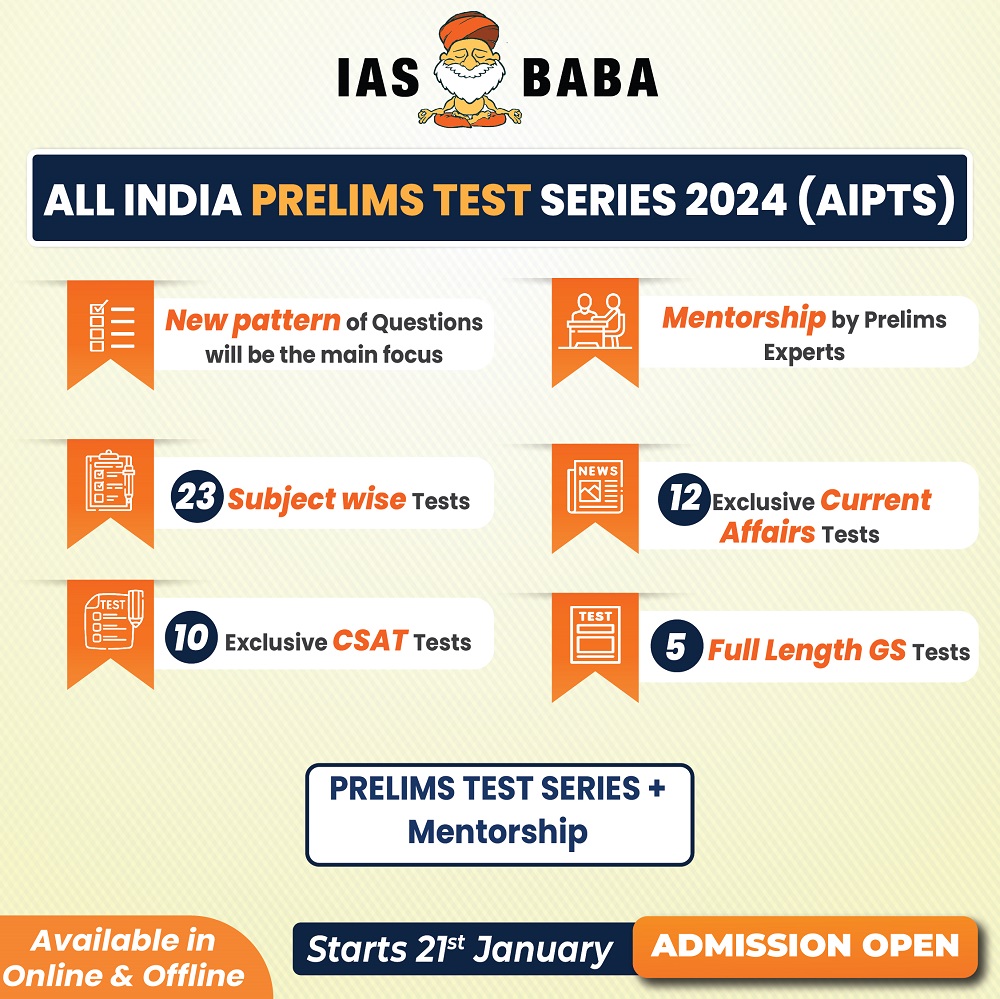IASbaba's Daily Current Affairs Analysis
IAS UPSC Prelims and Mains Exam – 23rd November 2019
Archives
(PRELIMS + MAINS FOCUS)
GDP slump will hit $5 tn target, warns NITI Aayog
Part of: GS Prelims and GS-III- Economy
In news:
- The road to a $5 trillion economy by 2025 is beset with many speed breakers
- A measure of growth without accounting for inflation — has to be at least 12.4% on an average if that target has to be reached.
- Domestic investment and consumption are the only dependable drivers for sustainable re-acceleration of the economy.
- According to data he provided, gross fixed capital formation in the sub-sector of ‘dwellings, other buildings and structures’ fell from 12.8% of GDP in 2011-12 to 6.9% in 2017-18
- The slowdown in the domestic market is also because of limited availability of capital with the banks which are tied down due to high non-performing assets in heavy industry and infrastructure.
- In the power sector, there is a high cross-subsidisation in favour of residential tariff leading to very high industrial tariffs
- The electric power transmission and distribution (T&D) losses in India stand at 19%, higher than that of Bangladesh and Vietnam.
- Urgent need to focus on export of high-value technology and manufacturing goods instead of primary goods currently exporter
- 98% of phones exported by India are in the low-value category, to the Middle East and Africa.
Image source: The Hindu
Amaravati finally finds a place in political map of India
Part of: GS Prelims and GS-II- Polity
In news:
- The Survey of India released a new political map of India with Amaravati as the capital of Andhra Pradesh, which became the residuary State after bifurcation of combined Andhra Pradesh in 2014.
- Amaravati was missing from the new map, which was released by the Survey of India
- It kicked off a political storm with the Opposition TDP and the ruling YSR Congress Party blaming each other for the Centre refusing to recognise Amaravati as the capital of the State.
- Amaravathi is a town located on the banks of Krishna River, in Guntur district of the Indian state of Andhra Pradesh.
- It is the headquarters of Amaravathi mandal, and forms part of the Andhra Pradesh Capital Region with its headquarters at new Amaravati 35 km (22 mi) east, whose name is also borrowed from the name of Amaravathi.

Image: Telangana_Andhra
Centre, Punjab at odds over stubble burning
Part of: GS Prelims and GS-III- Environment
- With paddy harvesting at its fag end in the key grain producing State of Punjab, both the Central and State governments released data on stubble burning.
- Union Agriculture Minister Narendra Singh Tomar told the Rajya Sabha that the events had declined 19% this year, including a 16.8% reduction in Punjab.
- Punjab’s Pollution Control Board (PCB) data show an increase of 2.3% in the number of incidents.
- The Centre’s data come from the Indian Council of Agricultural Research (ICAR), monitors stubble burning in Punjab, Haryana and Uttar Pradesh using satellite data.
- PCB routinely counts stubble burning incidents from September 24, given that paddy harvesting begins in early to mid-September.
- The burnt area figure, which is compiled at the end of the season, gives the actual ground reality about farm fires. Last year, the burnt area had decreased by 9.95% in comparison with 2017.
- The burning of crop residue is regulated under the Air (Prevention and Control of Pollution) Act, 1981.
Bengaluru is India’s top-ranked city in new global inclusive prosperity index
Part of: GS Prelims and GS-II- Report
- Bangalore emerged as India’s highest ranked city at No. 83 in a new index of the world’s 113 cities in terms of economic and social inclusivity, topped by Zurich in Switzerland.
- The first-ever Prosperity & Inclusion City Seal and Awards (PICSA) Index, released in the Basque Country capital of Bilbao in northern Spain
- Delhi at 101 and Mumbai at 107 are the other Indian cities in the index, with the top 20 awarded a PICSA Seal as the world’s highest-ranked cities building inclusive prosperity.
- PICSA provides a new measure of economic productivity that goes beyond GDP to provide a holistic account of how well people are doing in the economy and which have the populations that are most empowered to contribute to its economy and share in its benefits, explained Asier Alea Castanos, Director of Strategic Programmes at the Regional Council of Biscay, in reference to the index launch
- Zurich, number one, scores strongly across all measures, particularly on quality of life, work, housing, leisure, safety, and education — with the Swiss higher education system attaining an especially high score.
(MAINS FOCUS)
POLITY/ECONOMY
TOPIC: General Studies 2:
- Welfare schemes for vulnerable sections of the population by the Centre and States and the performance of these schemes; mechanisms, laws, institutions and Bodies constituted for the protection and betterment of these vulnerable sections.
General Studies 3:
- Indian Economy and issues relating to planning, mobilization of resources, growth, development and employment.
- Inclusive growth and issues arising from it.
Labour Code Bill
Context:
- The Union Cabinet approved The Industrial Relations Code Bill, 2019 recently
- It proposes to amalgamate The Trade Unions Act, 1926, The Industrial Employment (Standing Orders) Act, 1946, and The Industrial Disputes Act, 1947.
- It is the third code under labour reforms.
- There will be total four broad labour codes .
- Code on Wages has already been approved.
- Code on Occupational Safety, Healthy and Working Conditions Bill was introduced in the Budget session this year.
- Code on Social Security is in the pre-legislative stage.
Trade Unions Act, 1926
- The Act provides for the registration of the trade unions with the ‘Registrars of Trade Unions’ set up in different States.
The Industrial Disputes Act, 1947
- The objective of the Industrial Disputes Act is to secure industrial peace and harmony
- It provides mechanism and procedure for the investigation and settlement of industrial disputes by Conciliation, arbitration and adjudication are way which is provided under the statute.
- The main and ultimate objective of this act is “Maintenance of Peaceful work culture in the Industry in India”.
The Industrial Employment (Standing Orders) Act, 1946
- The Industrial Employment (Standing Orders) Act 1946 requires that employers have terms including working hours, leave, productivity goals, dismissal procedures or worker classifications, approved by a government body.
Features of the The Industrial Relations Code Bill, 2019
- It offers some degree of flexibility on government permissions for retrenchment,
- The most important aspect of the Bill is that it presents the legal framework for ushering in the concept of ‘fixed-term employment’ through contract workers on a pan-India basis.
- With the introduction of fixed-term employment, they will be able to hire workers directly under a fixed-term contract.
- Under fixed-term employment system, companies can hire contract workers directly instead of hiring through contractors.
- There will be flexibility to tweak the length of the contract based on the seasonality of industry.
- These workers will be treated on a par with regular workers during the tenure of the contract.
- The bill provides setting up of a two-member tribunal which will lead to speedier disposal of cases.
- The threshold required for government permission for retrenchment has been kept unchanged at 100 employees.
- There is flexibility for changing the threshold which can be done through notification.
- At present, any company having 100 workers or more has to seek government approval for retrenchment.
- The fixed-term employment will also help in the flow of social security benefits to all workers along with making it easier for companies to hire and fire.
Disadvantages/apprehensions regarding the Bill:
- Unclear provision regarding retrenchment would lead to uncertainty, and
- Discretionary behaviour during implementation by the central or state government may not be in favour of workers.
- Any discretion in law leads to uncertainty, lack of clarity, discriminatory implementation, and provides scope for unnecessary usage.
- The government should be clear whether to increase the threshold or retain the threshold and face the consequences.
- This is a kind of appeasement to both sides, which will not actually provide relief to either of them.
- Fixed-term employment needs to be introduced with adequate safeguards, otherwise it runs the risk of encouraging conversion of permanent employment into fixed-term employment.
Connecting the dots:
- The Code on Industrial Relations (IR) Bill, 2019 is considered to be the most contentious labour law amendments. Analyse.
POLITY
TOPIC: General Studies 2:
- Important aspects of governance, transparency and accountability, e governance- applications, models, successes, limitations, and potential; citizens charters, transparency & accountability and institutional and other measures
The Supreme Court has refused to stay the usage of Electoral bonds
Context:
- The Supreme Court has refused to stay the usage of electoral bonds for political donation
- It said that all parties must reveal the details to the Election Commission in a sealed cover by May 30, 2020.
- The electoral bonds scheme that was introduced by the BJP has several loopholes and
- The scheme was objected to by several political parties and also the RBI and the Election Commission.
- The ruling BJP introduced the electoral bonds scheme nearly three years ago, ostensibly to rid the system of black money.
- However, electoral bonds scheme has been turned out to be even more opaque, questionable and illegally utilised than the model that preceded it.
What are electoral bonds?
- Electoral bonds function like gift vouchers.
- Anyone can buy them from the State Bank of India and hand them over to a political party of their choice,
- One doesn’t have to attach a name to them.
- The parties can then encash those for money.
As per government scheme,
- The bonds are only supposed to be available in four 10-day windows through the year
- They can only be bought with cheque or digital transfer.
- The government also removed the requirement that only profitable companies can donate money to political parties making it easier for foreign firms to donate as well.
Who can receive electoral bonds?
- Issued in multiple values of Rs 1,000, Rs 10,000, Rs 1 lakh, Rs 10 lakh and Rs 1 crore, these bonds can only be encashed by political parties, which had
- The parties are needed to secure at least 1 per cent of the votes polled in the most recent LokSabha or state election.
- Monies received from electoral bonds will be deposited in a bank account verified by the Election Commission.
- All the transactions for electoral bonds can be done only through that account.
Controversy behind electoral bonds:
- Experts point out that electoral bonds are most likely the first-of-its-kind instrument in the world used for funding political parties.
- While the United States has Political Action Committees which receive money from individual and corporate donors and manage them, they do not have any scheme that allows the citizen to directly purchase a bond and donate the same to a political party.
- Opponents to the scheme allege that since the identity of the donor of electoral bonds has been kept anonymous, it could lead to an influx of black money.
- Others allege that the scheme was designed to help big corporate houses donate money without their identity being revealed.
- Some experts, however, differ and say the idea of electoral bonds was never to entice big corporate houses into making political donations without being identified.
- Something that was meant to bring transparency to the system, electoral bonds actually make political funding more opaque – but only for the public.
- Companies don’t have to say who they are donating money to and parties don’t need to say from whom they’re getting the cash.
- Moreover, the other changes regarding foreign firms and profitable companies means that electoral bonds could easily be used by shell firms that have no actual business or profit as a way of channeling money into politics.
- This is the critique that came from the Election Commission of India, which told the SupremeCourt that it will have a “serious impact” on transparency in political funding and could allow for “unchecked foreign funding” of Indian political parties.
- The Reserve Bank of India, when asked for its opinion, had said the bonds would set a “bad precedent” since it would allow for money laundering and undermine trust in banknotes.
- Despite this criticism, the Finance Ministry said that the RBI has “not understood” the mechanism of electoral bonds and that it was going forward with them regardless.
- The Reserve Bank wanted to be the organisation issuing the bonds.
- It also wanted the bonds to be digital rather than physical. This was overruled by the Finance Ministry, which wanted the bonds to remain anonymous.
- Electoral bonds are anonymous as far as the public is concerned, the government can easily discover who is buying and donating them – giving the party in charge a huge advantage in information, and potentially deterring any individuals or companies from donating any bonds to the Opposition.
- According to the recent report, in the first sale of electoral bonds, 95% went to the BJP.
What did the Supreme Court say?
- In its order, the Supreme Court said that while it wanted to hear the matter at length at a later stage, for the interim it wanted a situation where the balance was not tilted in anyone’s favour.
- It has asked political parties to reveal details of the donations they received through electoral bonds to the Election Commission.
- The poll panel, on the other hand, has been asked to keep all the details in a sealed cover until further orders of the top court.
Way forward:
- Various commissions, including the Election Commission, have given detailed recommendations on suitable remedies.
- Complete transparency in all funding.
- Political parties need to be under the Right to Information Act. The Central Information Commission ruled that they were, but the parties refuse to follow its directions.
- There must be spending limits as well as donation limits, especially in a highly unequal society like ours, and strict penalties for flouting rules and the law.
- Public funding needs to be examined and introduced with proper checks and balances.
- Voters need to demand changes and we need voter awareness campaigns.
- The simple message from voters to political parties could be “we like you, not yyour big money. If you want, we will all pitch in and give small individual donations.”
- If voters reject candidates and parties that overspend or bribe them, we would have moved democracy one level higher.
- Most important, the electoral bonds scheme needs to be scrapped.
- The Supreme Court is hearing a petition on this issue.
Let us hope Indian democracy survives without going through another crisis.
Connecting the dots:
- Election Commission of India told the Supreme Court that electoral bonds will have a “serious impact” on transparency in political funding and could allow for “unchecked foreign funding” of Indian political parties. Comment.
(TEST YOUR KNOWLEDGE)
Model questions: (You can now post your answers in comment section)
Note:
- Correct answers of today’s questions will be provided in next day’s DNA section. Kindly refer to it and update your answers.
- Comments Up-voted by IASbaba are also the “correct answers”.
Q.1) Dharma Guardian is military exercise conducted between India and which other country?
- USA
- Srilanka
- Japan
- None of the above
Q.2) Consider the following statements about NaVIC
- It is India’s own Regional Navigation Satellite System
- It is designed to provide accurate position information service to users in India as well as the region extending up to 1500 km from its boundary
Select the correct statements
- Only 1
- Only 2
- Both 1 and 2
- Neither 1 nor 2
Q.3) Consider the following statements about Cartosat-3
- Cartosat-3, with an ISRO-best resolution of 25 cm, will be the first of a series of high resolution, third generation satellites planned for observing the Earth
- It will be launched by GSLV MK-III
Which of the statement(s) given above is/are correct?
- 1 only
- 2 only
- Both 1 and 2
- Neither 1 nor 2
ANSWERS FOR 22 Nov 2019 TEST YOUR KNOWLEDGE (TYK)
| 1 | C |
| 2 | B |
| 3 | B |
MUST READ
Occupation rewards: On U.S. support to Israeli occupation
The opacity around electoral bonds
No light at the end of the Brexit deadlock
A blow against punitive constitutionalism
Supreme Court’s Ayodhya verdict has not upheld the law, nor delivered justice
In Kashmir, people’s fears about loss of identity must be addressed















